| South Flank, Burning Tigers:
Stalin’s Tanks
By William Sariego
August 2023
 Daily Content has previously supplied an excellent piece on the German tanks employed at Kursk, while this piece represents the official Kremlin rebuttal. The campaign at Kursk saw both sides in transition as far as their armored forces were concerned. For the Germans, Kursk represented a “the future is now” maximum effort, as her armored forces had been reorganized and reequipped with newer, more powerful models since the last summer offensive. For the Soviets it was just the opposite. The T-34 and KV-1 which had so discouraged German tankers in 1941 were about to become effectively obsolete and would give way to newer versions after the campaign. Daily Content has previously supplied an excellent piece on the German tanks employed at Kursk, while this piece represents the official Kremlin rebuttal. The campaign at Kursk saw both sides in transition as far as their armored forces were concerned. For the Germans, Kursk represented a “the future is now” maximum effort, as her armored forces had been reorganized and reequipped with newer, more powerful models since the last summer offensive. For the Soviets it was just the opposite. The T-34 and KV-1 which had so discouraged German tankers in 1941 were about to become effectively obsolete and would give way to newer versions after the campaign.
Here’s a look at the Red Army’s tanks, as found in Panzer Grenadier: Kursk, South Flank and Panzer Grenadier: Kursk, Burning Tigers.
Light Tanks
 
There is no doubt that the T-70 was a decent AFV in its own right. I’ve maintained in print elsewhere that it was the most effective light tank of the middle war period of 1942-43 (The Chaffee gets the nod 1944-45 and the Stuart 1940-41). A light tank excels at recon work, infantry support, and fighting other lighter vehicles. When used as a battle tank they inevitably get mauled. Such was the case of the T-70 at Kursk. Rolling off the assembly lines at the Gorki Automobile Works in early 1942, the T-70 had the same chassis as the T-60 but reinforced to take the extra weight. A new turret was added which featured a 45mm anti-tank gun and a co-axial 7.62mm machine gun. The hull armor was sloped to give better protection and the extra wide tracks gave excellent cross country performance. A low silhouette helped survivability but a two-man crew hampered performance. Production would be halted in the fall of 1943 after 8,226 models had been manufactured.
Medium Tanks
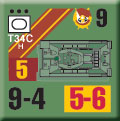 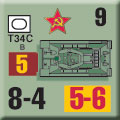  
So much has been written about the awesome T-34 that anything I say is redundant, but here it goes. In Kursk, South Flank and Kursk, Burning Tigers we have both the T-34b and T-34c represented, which are effectively the same in game terms (other than slightly better armor for the T-34c), though some very real differences existed in all models of the vehicle. Earlier models feature a cast rather than welded turret, and the hatch designs could vary. A shortage of rubber forced many models to use all-metal wheels which caused internal issues for both the engine and other components (including the crew) when the tank operated at high speeds. Rubber-rimmed wheels had begun to return thanks to Lend Lease at the time of Kursk. The C model would often feature a 360-degree commander’s cupola and drum-type fuel tanks for extended operations. It was armed with two 7.62mm machine guns, one co-axial with the main gun and the other hull-mounted. The 76.2mm F-34 anti-tank gun, which was more than fine by 1941-42 standards, was now ineffective against heavier German AFVs. In the autumn of 1943 a newer, improved model T-34 featuring an 85mm anti-tank gun would be introduced, though the T-34c would continue to be produced alongside it.
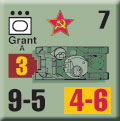
The M3 Grant would be the United States’ contribution to the epic battle. A total of 1,386 of the “Coffin for Seven Brothers” would be supplied to the USSR. In short the Soviets hated the Grant and considered it an “iron coffin’ because of its vulnerability to German fire and its tendency to burn easily once hit. Carrying a variety of weapons in a weird layout, the tank invited comparisons to the unsuccessful pre-war T-35. It featured a hull-mounted 75mm low-velocity gun and a 37mm anti-tank gun in the turret, with three .30-caliber machine guns (and sometimes a fourth in an anti-aircraft mount).
Heavy Tanks
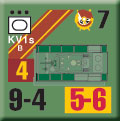 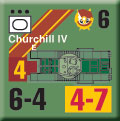
The KV-1 would have its swan song at Kursk. Its armor that so frustrated German gunners in 1941 could be much more easily opened up by the long 75mm and 88mm guns the Nazis used in 1943. With its armor compromised the KV was a dinosaur on the battlefield because its gun was the same featured in the medium T-34! By the time of Kursk the only real refinements were a redesigned turret for better efficiency and an upgraded transmission which helped cross country performance. The tank had three machine guns, one hull-mounted and two in the turret, one of which was co-axial and the other in the rear. After Kursk a few surviving models would be equipped with the new 85mm gun before production would be discontinued in favor of the JS line of heavy tank.
A small number of Churchill Mark III and IV were sent to the Soviet Union in late 1942 and early 1943. Some Mark II versions were sent but these were not present at Kursk. The only functional difference was that a shortage of suitable metal plate caused the introduction of a cast turret, which was designated the Mark IV. Lend Lease records show a total of 256 of the two Churchill models were sent, of which 24 were lost in transit. It drew unfavorable comparisons to the KV-1 from Soviet tankers. The 6-pounder gun was comparable to the Soviet 76.2mm cannon’s performance against armor, with a smaller (and often unavailable) high explosive charge, giving it the same firepower problems of the Soviet tanks. Mechanically it was not the most reliable and it performed poorly in mud and snow, two weather conditions quite common to Mother Russia.
You can order Burning Tigers (Playbook edition) right here.
Sign up for our newsletter right here. Your info will never be sold or transferred; we'll just use it to update you on new games and new offers.
Want to keep Daily Content free of third-party ads? You can send us some love (and cash) through this link right here.
|
